
Who has the upper hand in the China-India border dispute?
China’s annual defence budget of US$261 billion is more than triple India’s US$71 billion. But is China’s war chest enough to inflict a knockout blow?
China deploys between 200,000 and 230,000 troops to the region. It monitors Indian border troops and pays close attention to Tibet and Xinjiang, while also standing ready for potential conflicts with Russia.
India’s troops have plenty of experience operating in environments similar to the Himalayas due to their engagements with Pakistan and in Kashmir. But the 225,000 Indian ground troops stationed on the shared border have one mission: to protect India’s national interests from any perceived threat from China.
HOW THE FORCES COMPARE
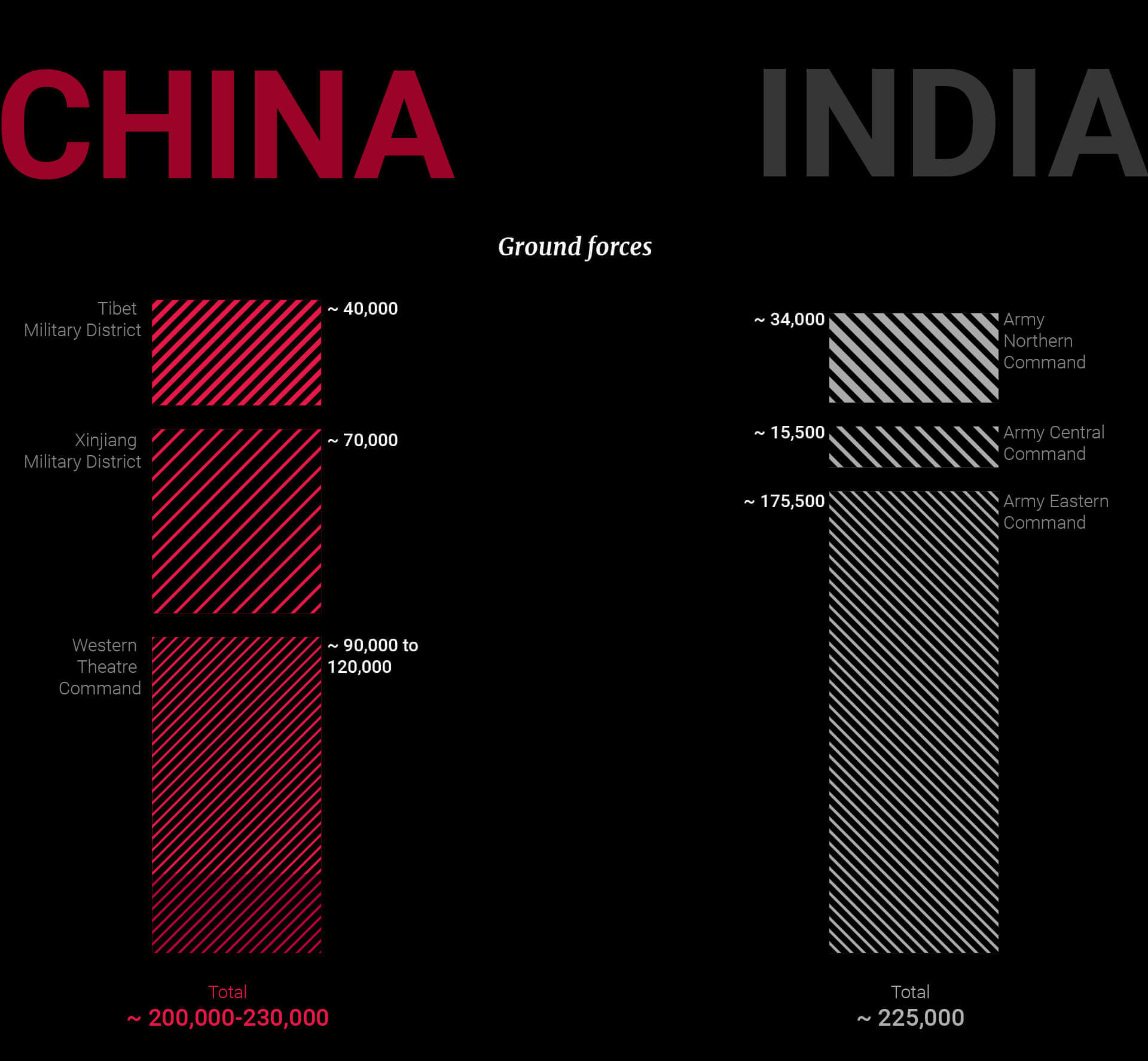
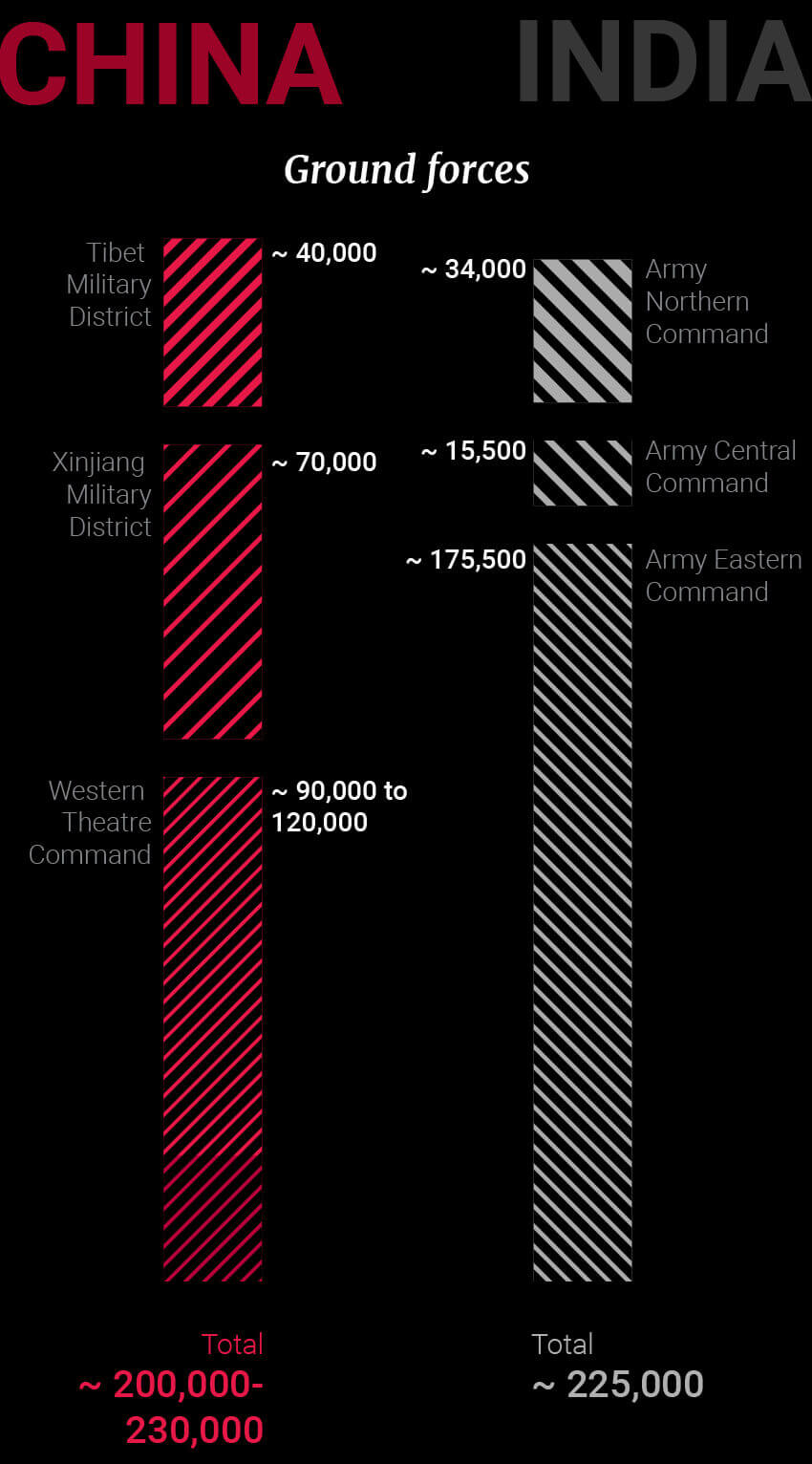
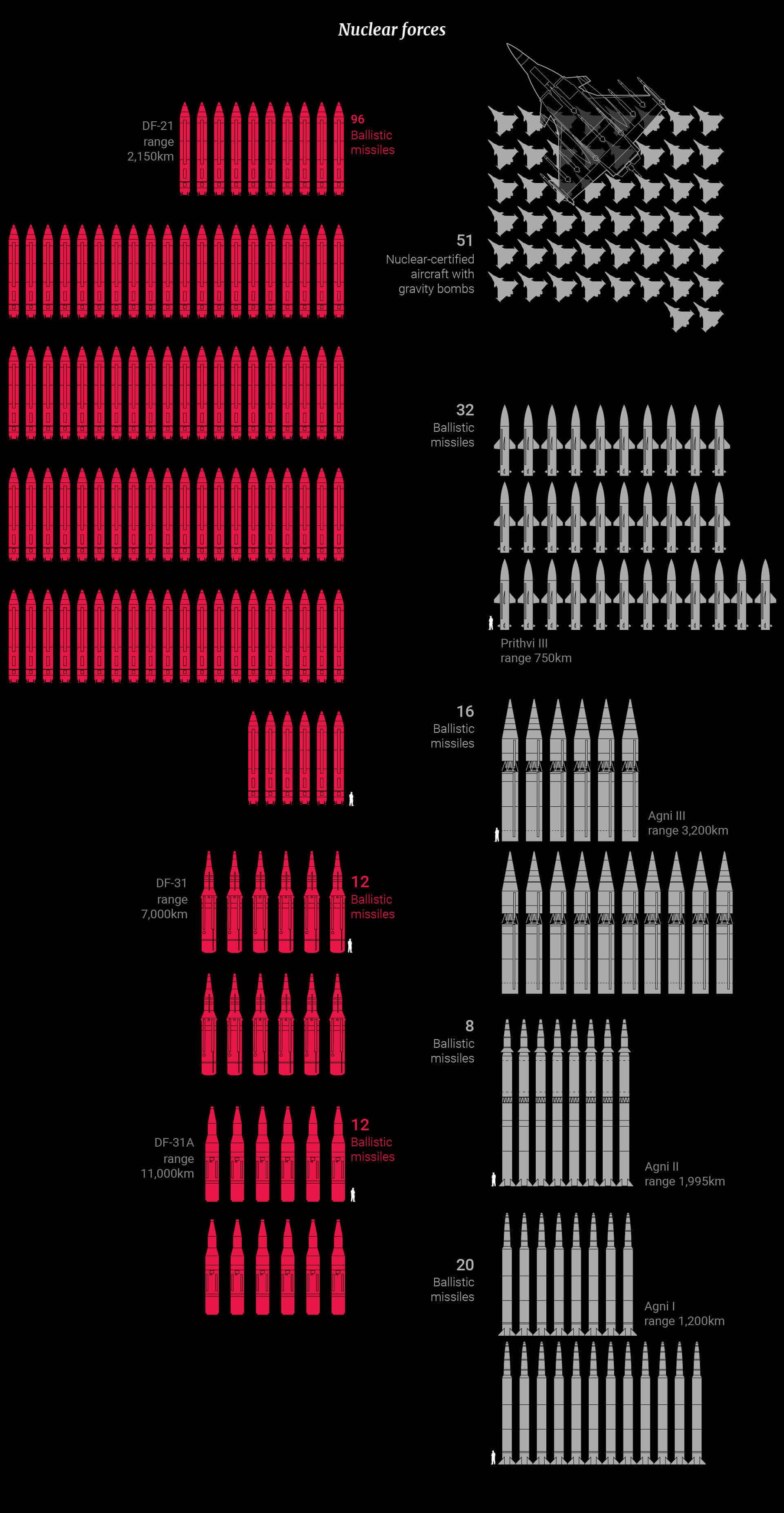

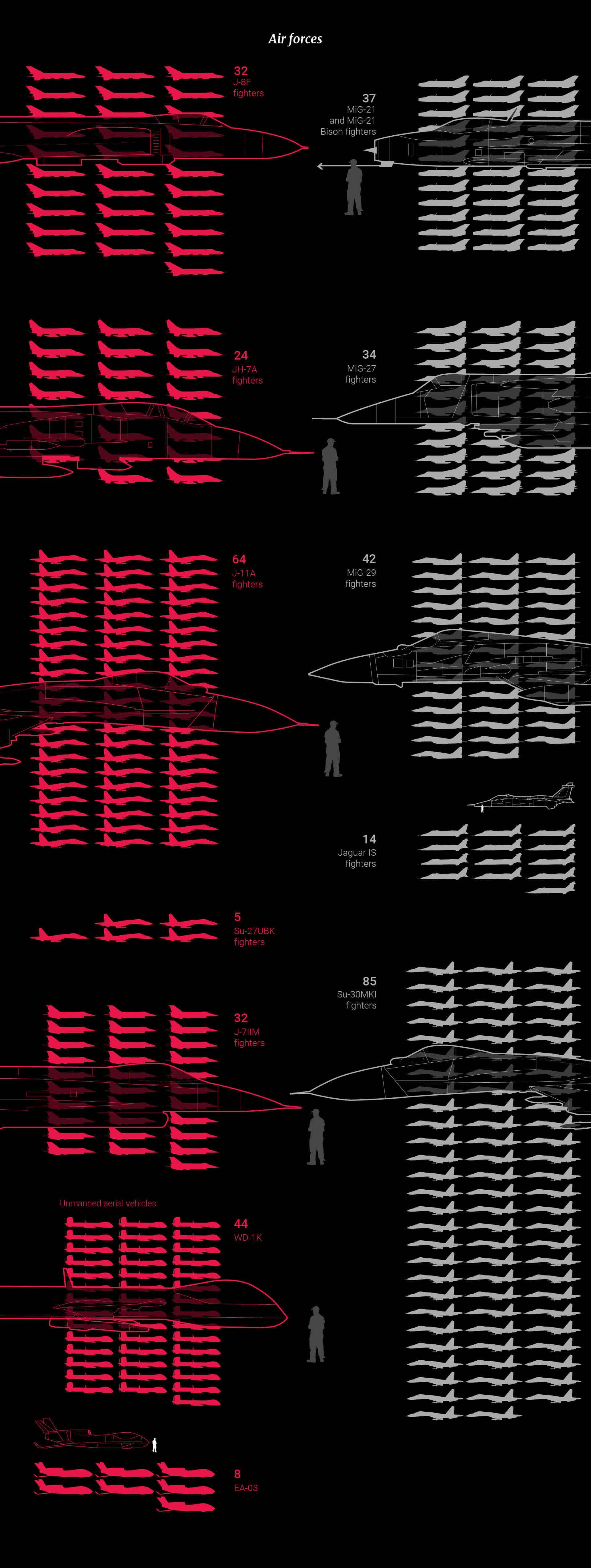

In June 2020, there was a deadly clash between Chinese and Indian troops on the “Roof of the World” in the Galwan Valley, one of the world’s most inhospitable places. The conditions are perilous for military personnel and their machinery and could potentially determine the outcome of an armed conflict. In Aksai Chin, winter temperatures regularly drop to minus 20 degrees Celsius, while the humid forests of Arunachal Pradesh can record annual rainfall of five metres.
Traditionally, cannon artillery use “firing tables” (data needed for firing a gun accurately on a target under standard conditions) to provide trajectory information for specific guns and ammunition while allowing for temperature or wind variables. But sudden changes in weather and topography render firing tables less effective, making detailed military intelligence essential. Accurate maps, local knowledge and precise meteorological reports are vital to minimise targeting errors.
Actors on the stage
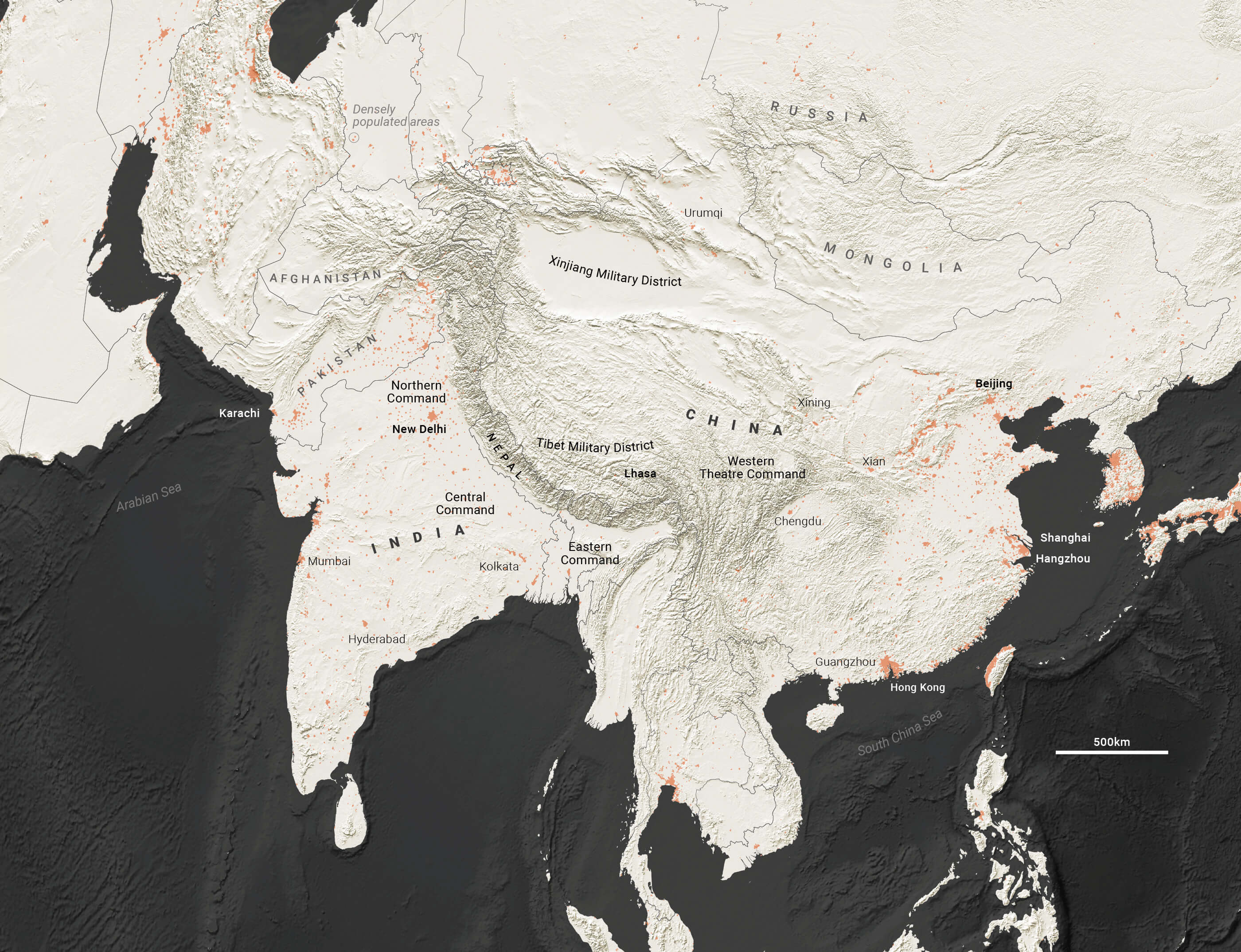
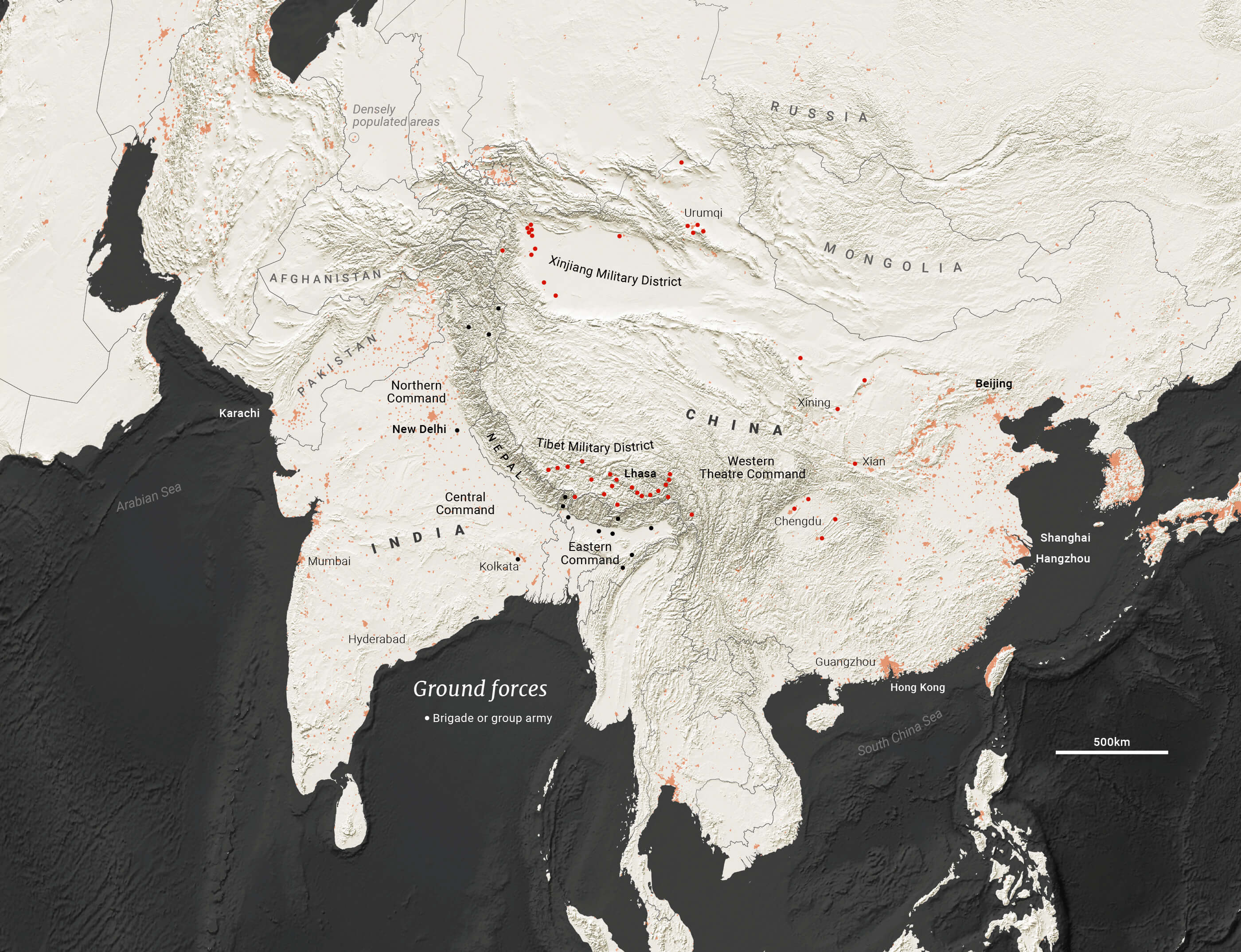
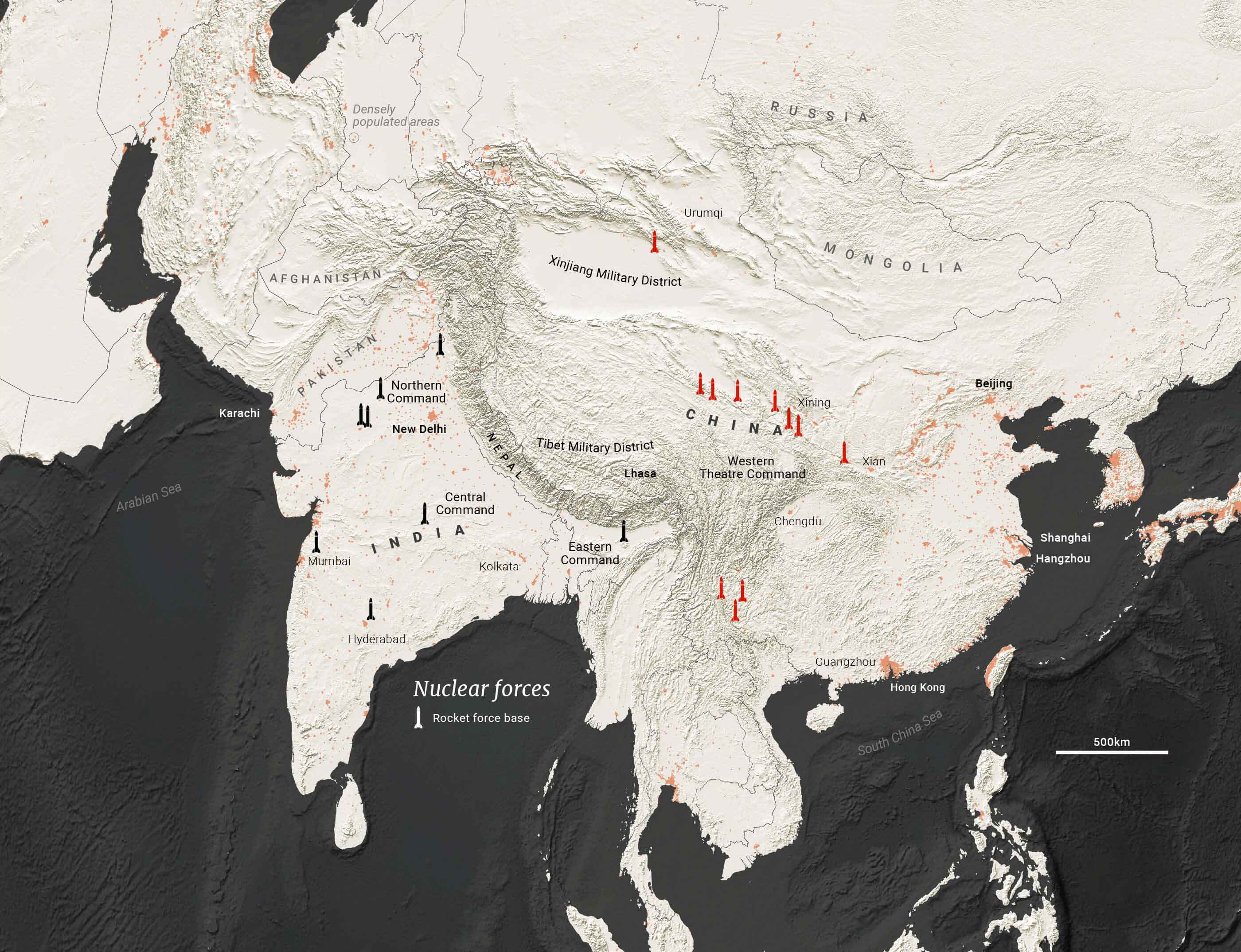
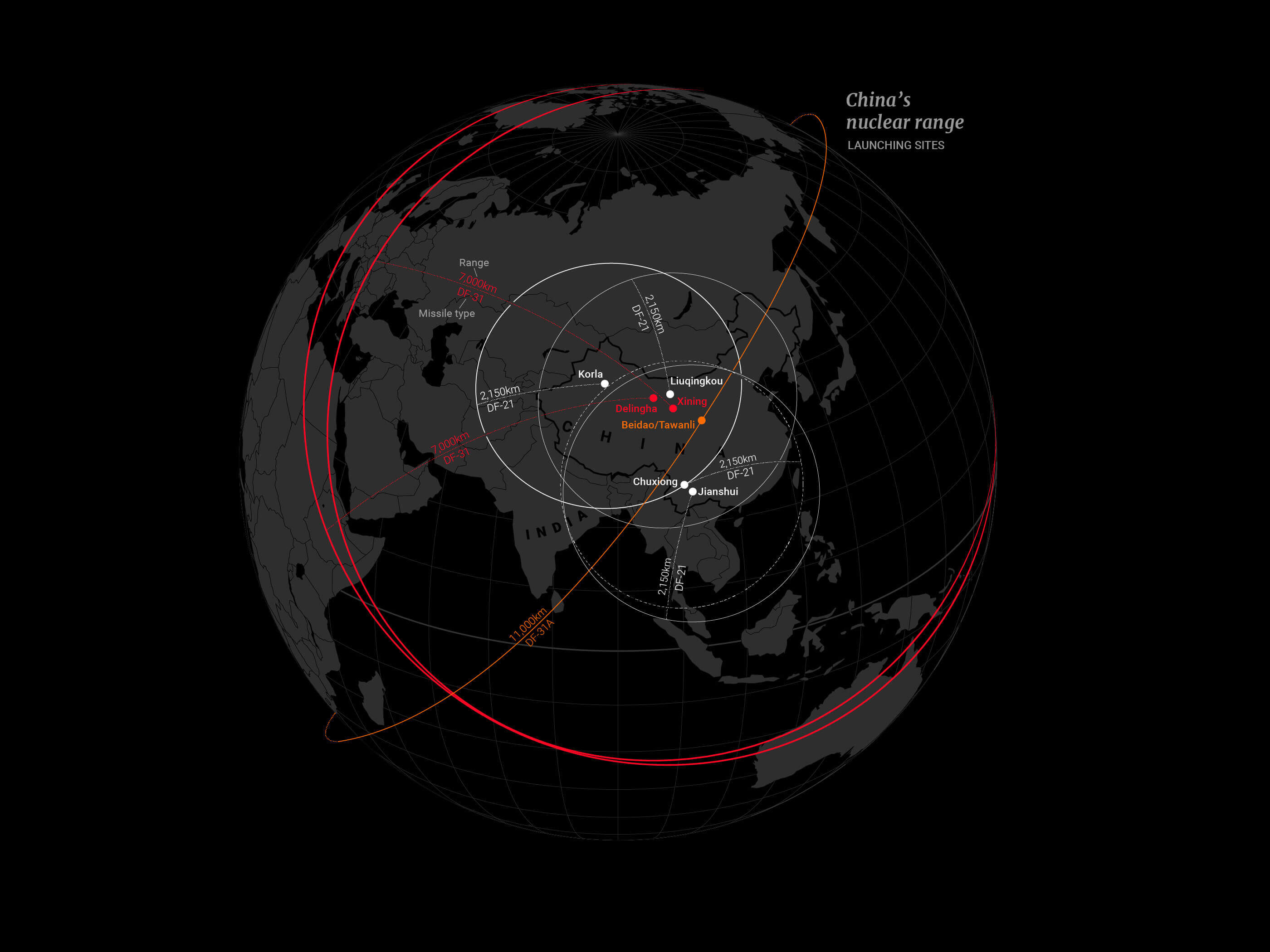
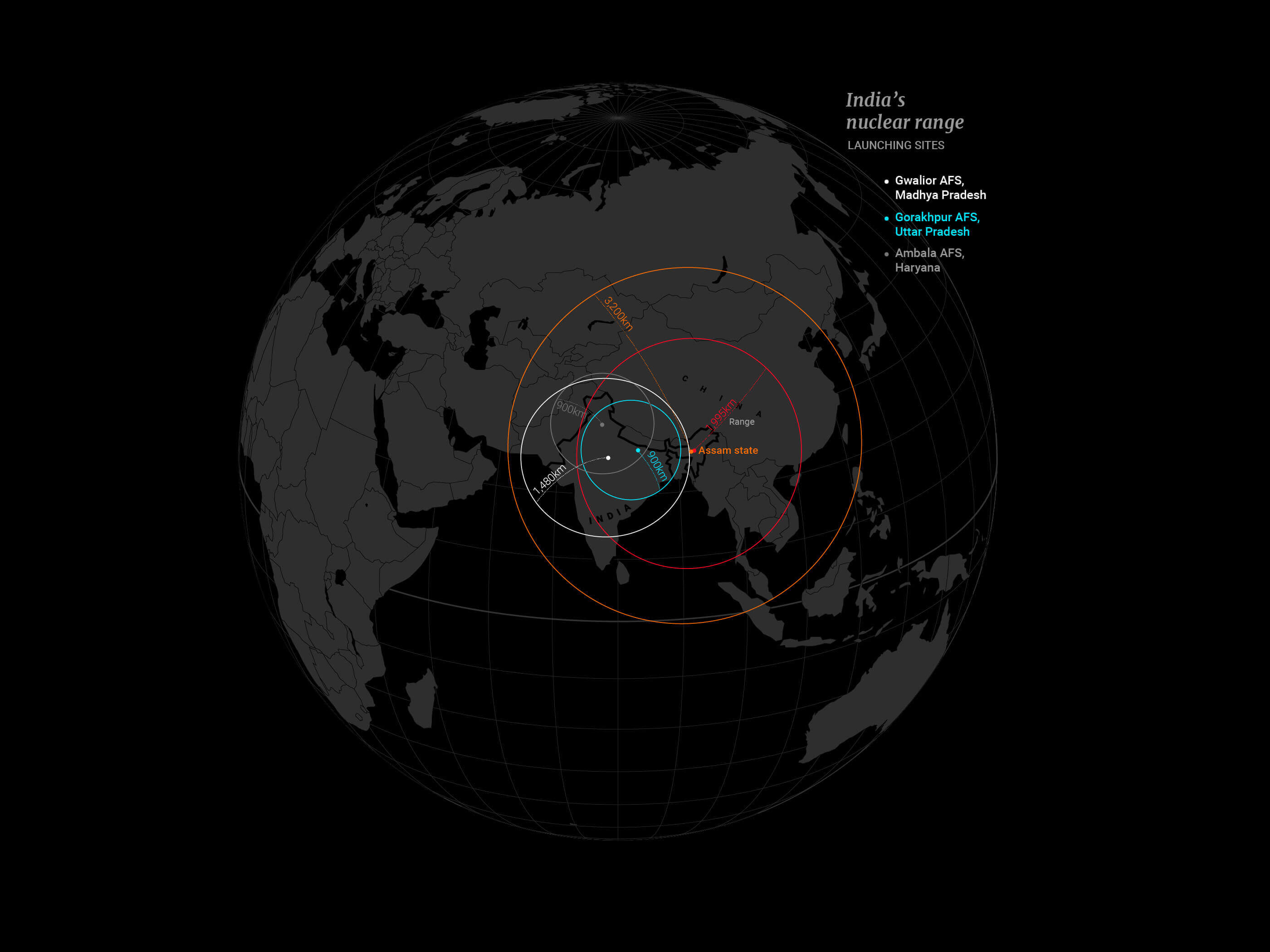
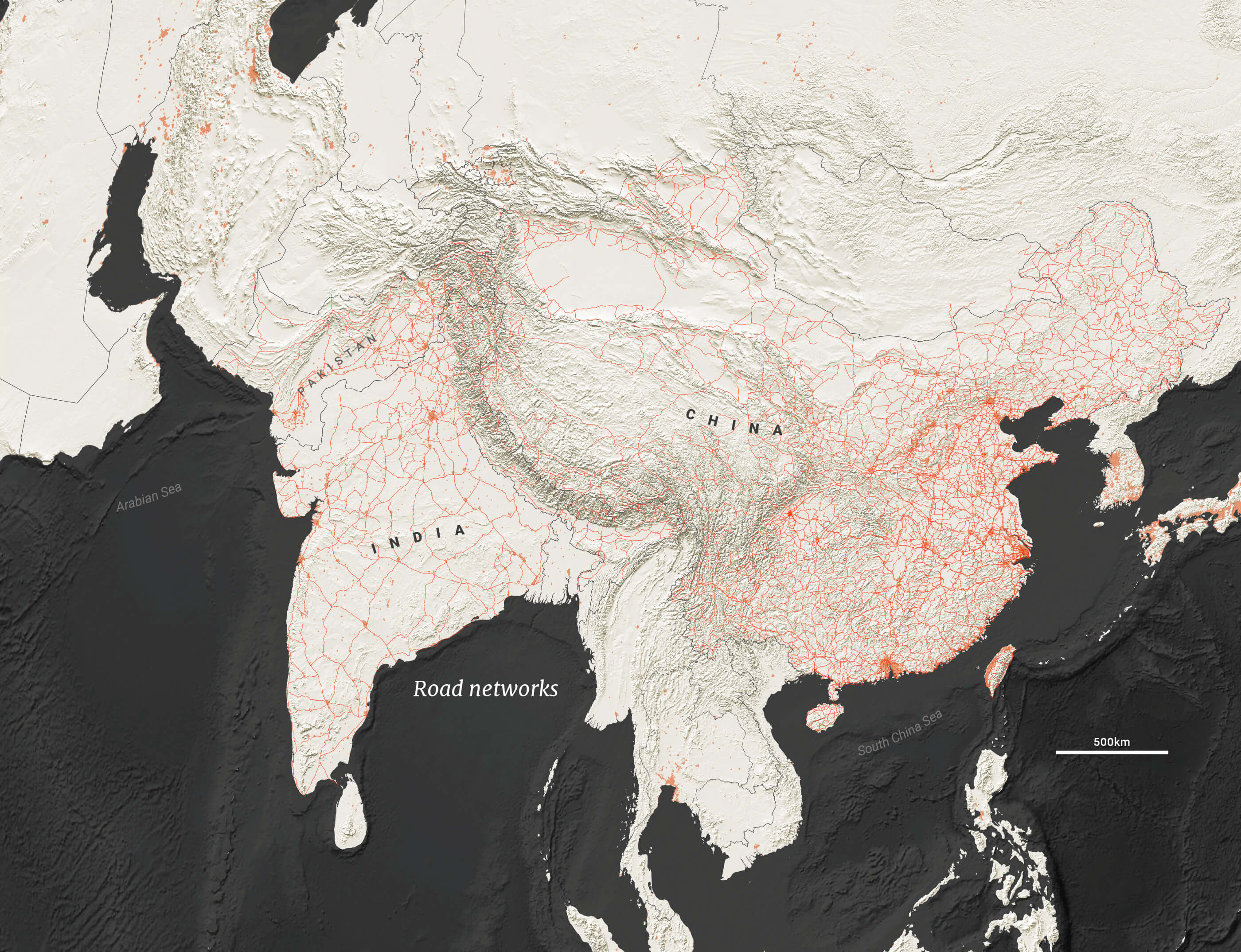
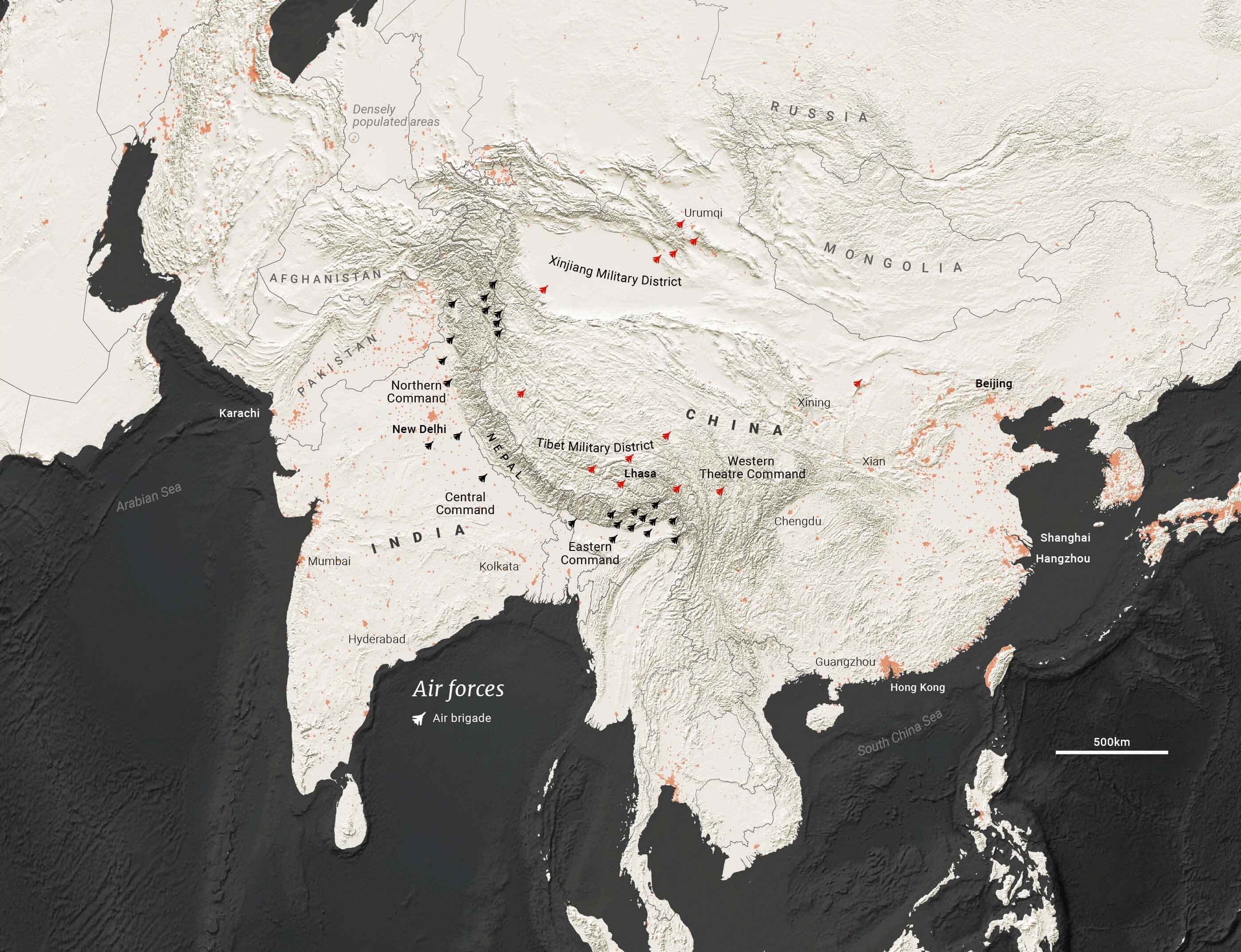
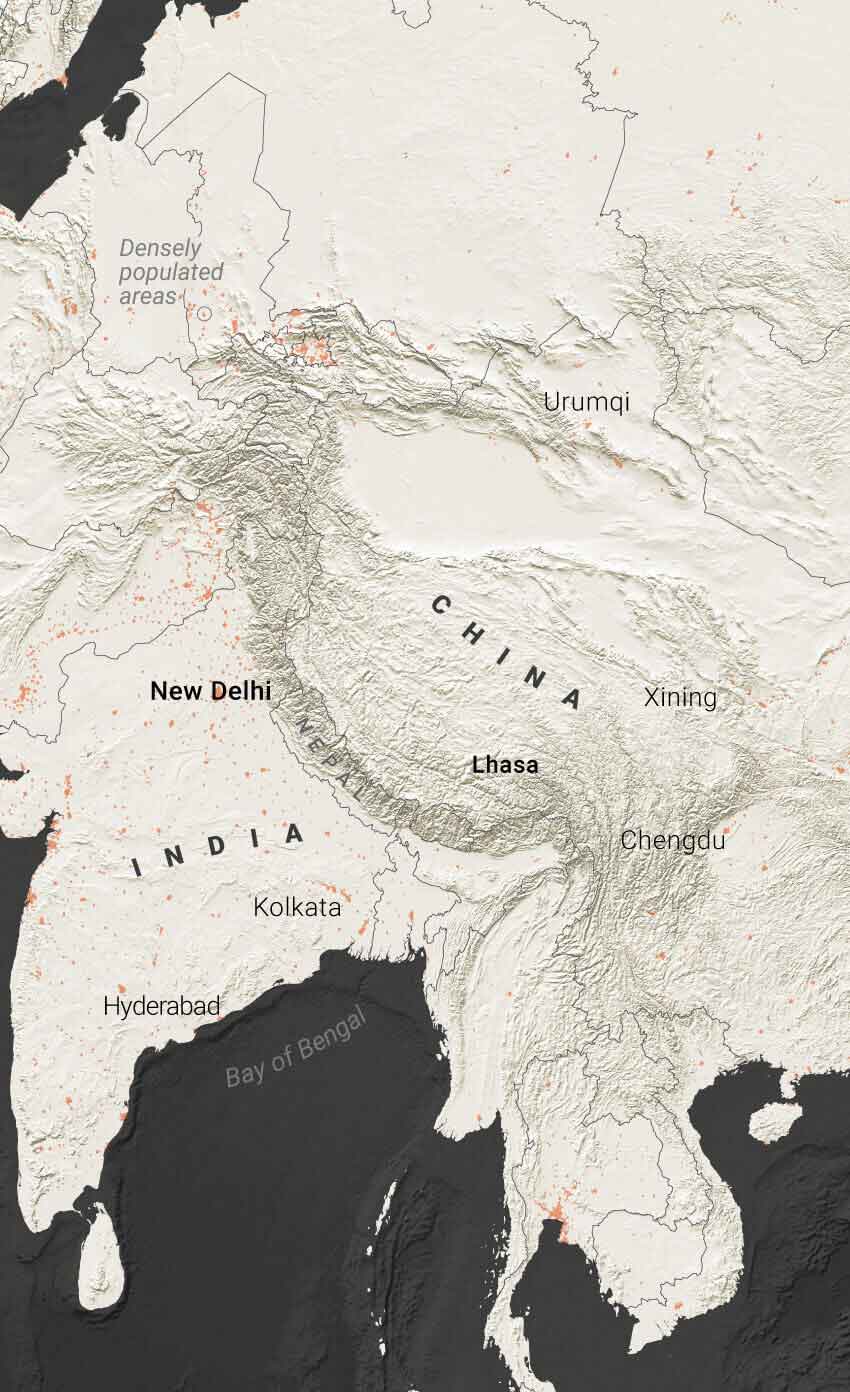
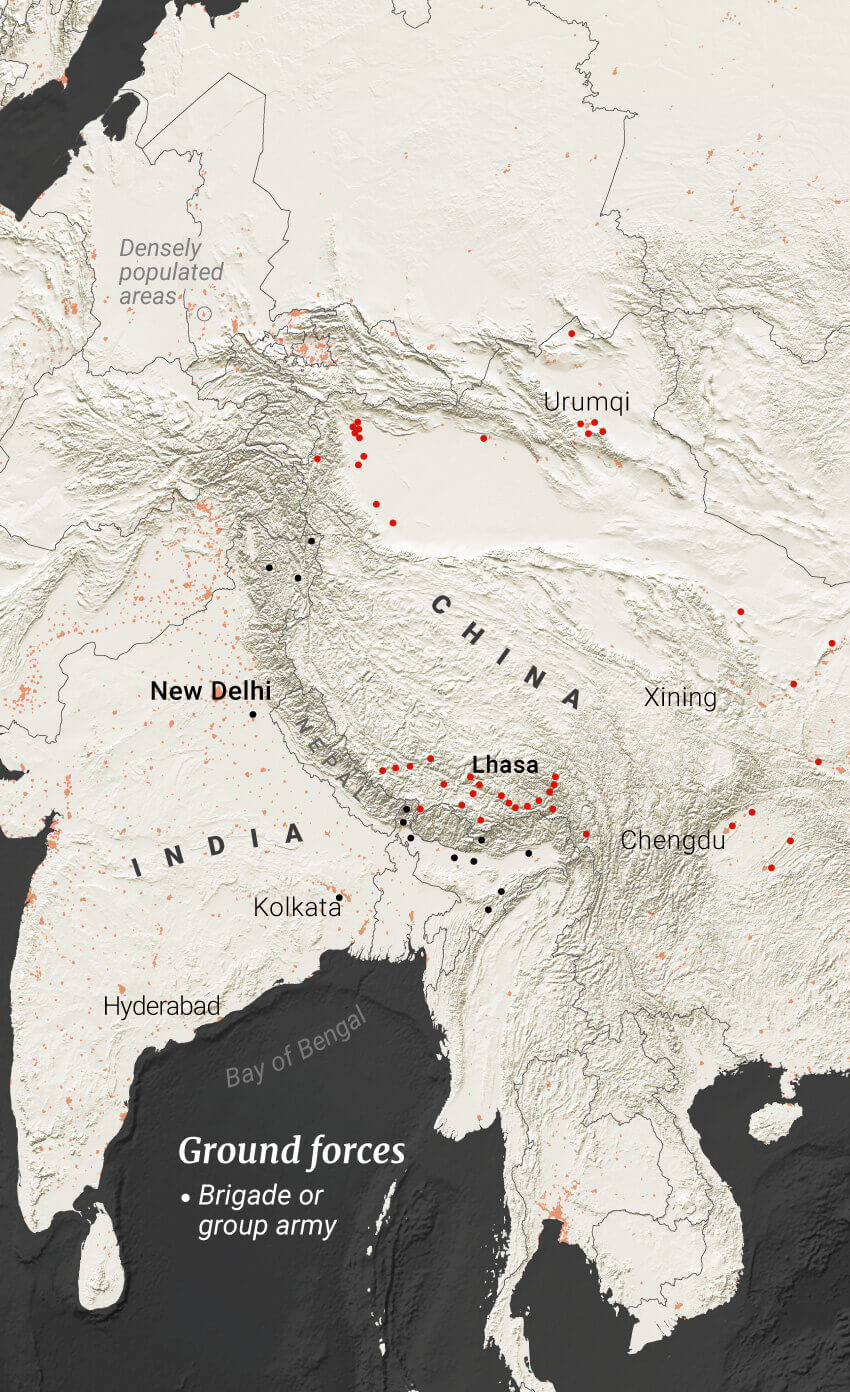
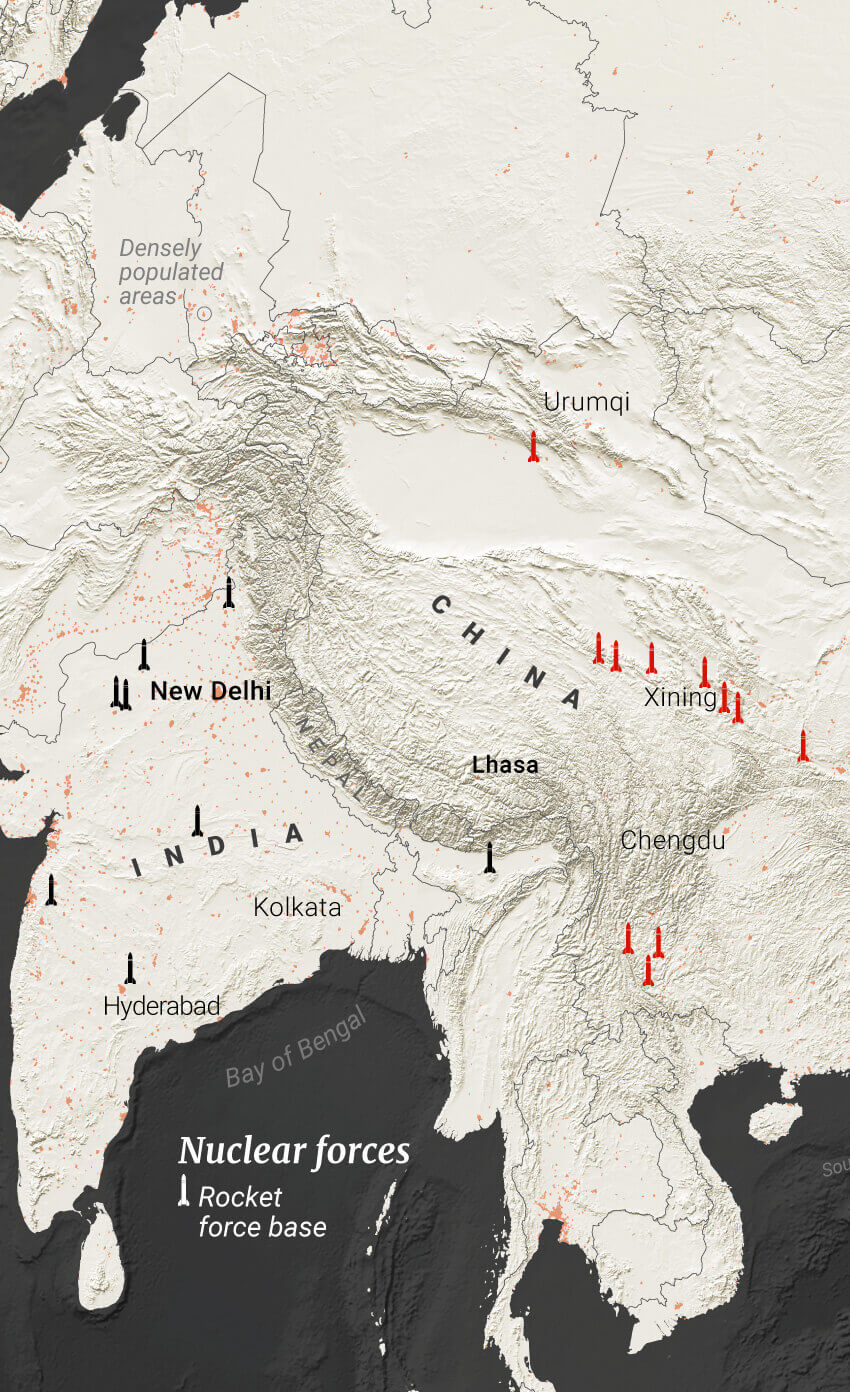
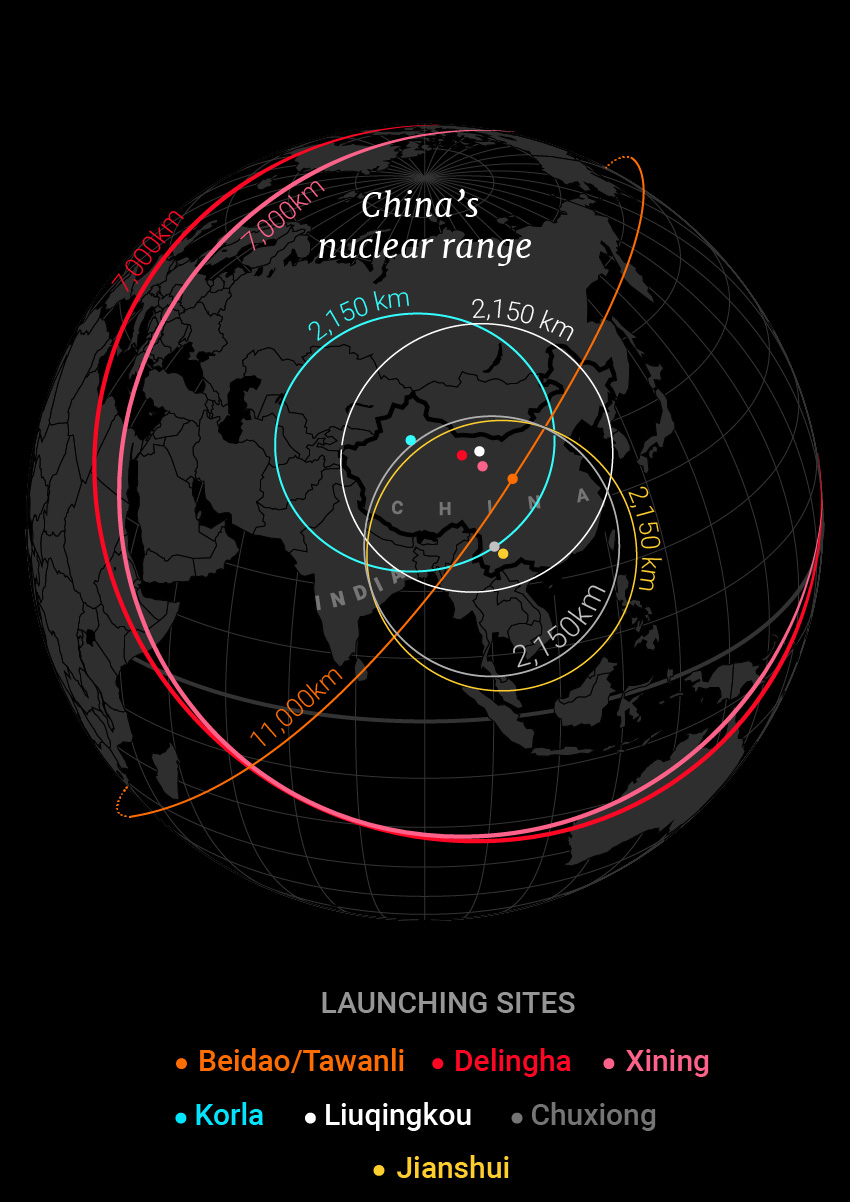
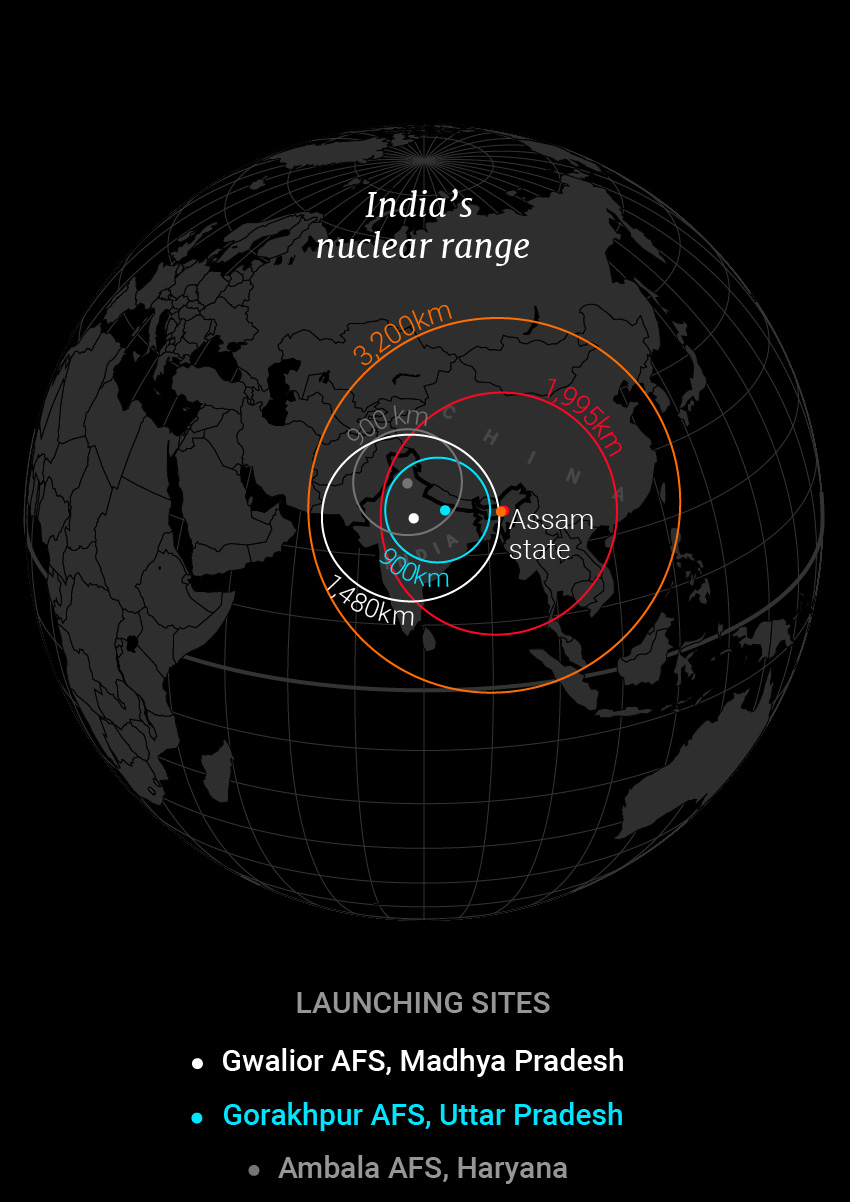
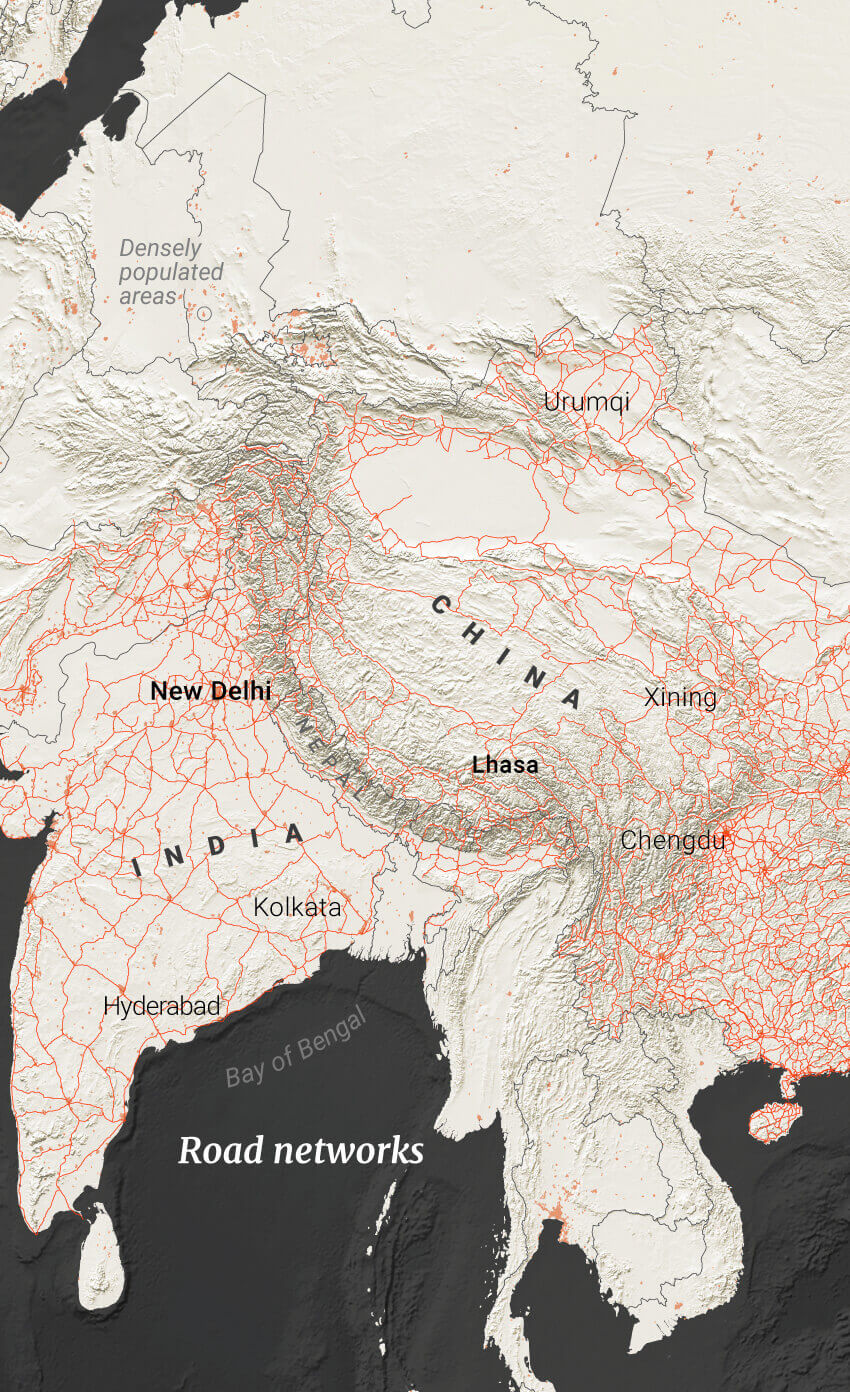
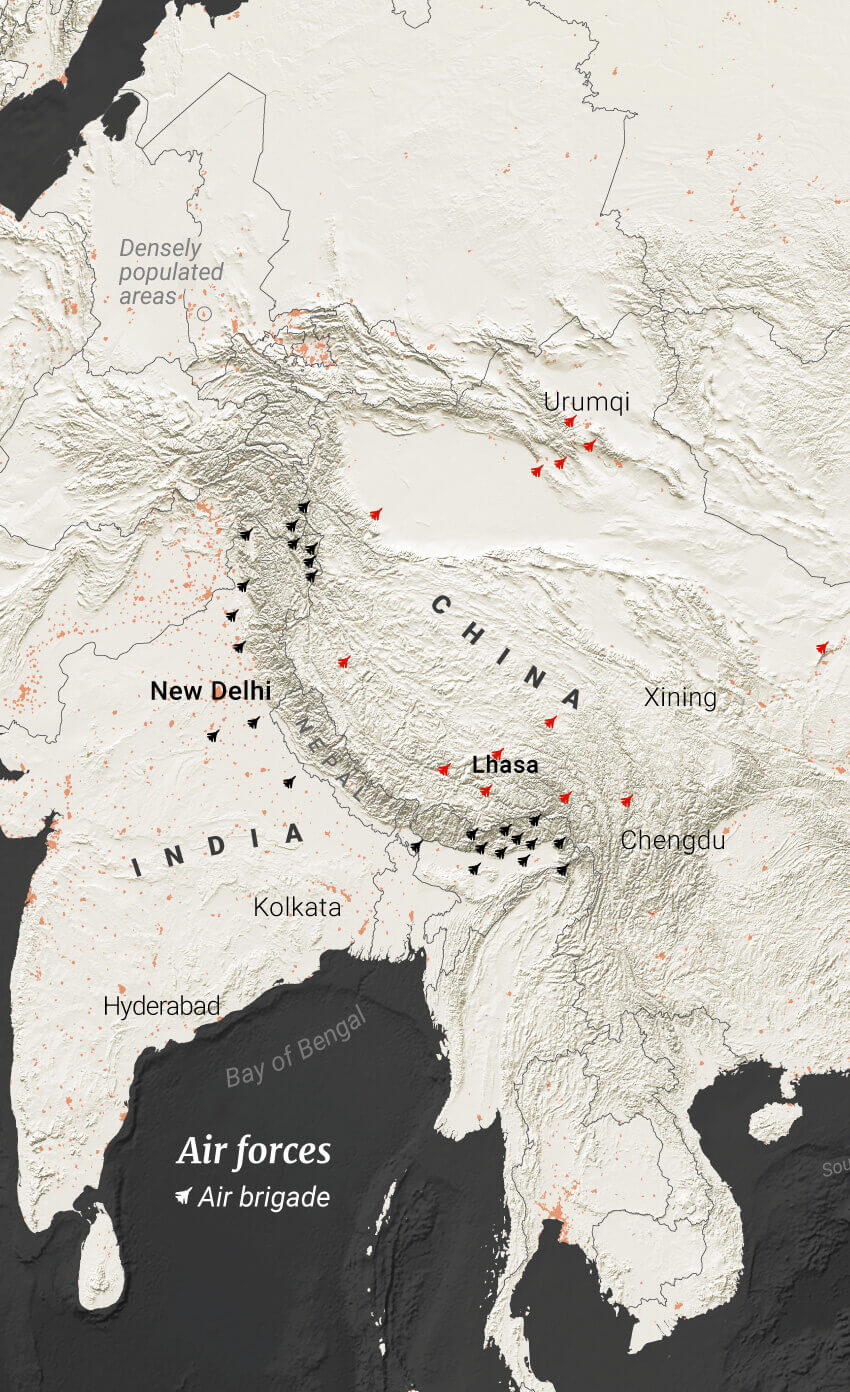
China’s logistical superiority
China has developed formidable infrastructure throughout the Tibet autonomous region. It includes a network of thousands of kilometres of fibre optics, small aperture terminal satellite stations and modern highways and high-speed railways that can rapidly deploy the People’s Liberation Army (PLA).
On the other hand, moving Indian troops from one valley to another can be fraught with logistical difficulties, severely compromising the deployment, movement and response time of Indian forces.
Due to the higher altitude of their positions in the western sector of the plateau, the PLA has an advantage in surveillance, artillery and missile operations. The Indian Army needs to navigate narrow passages when transporting its artillery, making it vulnerable to sabotage from “surgical incursions” by the PLA, which can concentrate firepower directly on the Indian border outposts.
Airfield proximity (in kilometres)
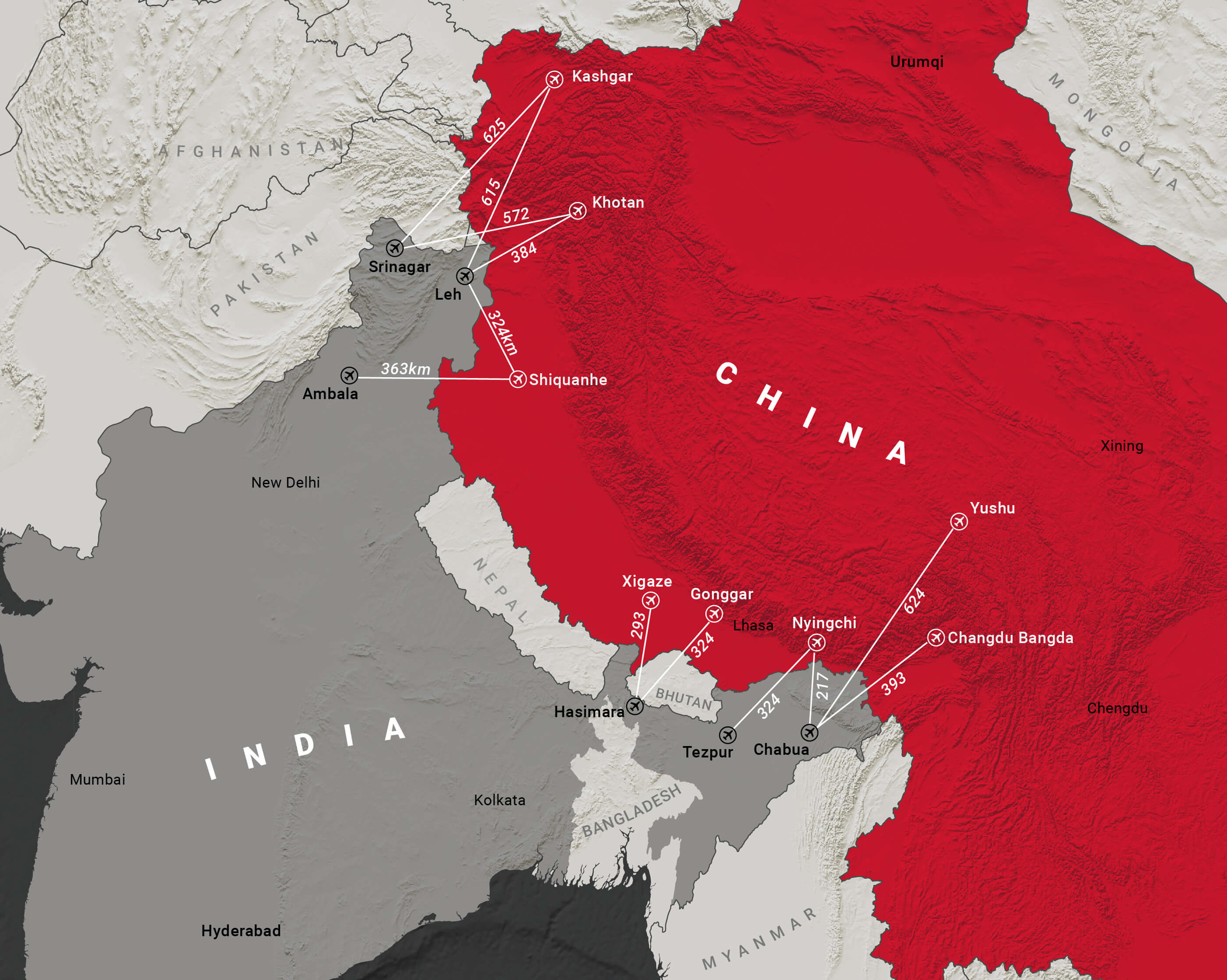
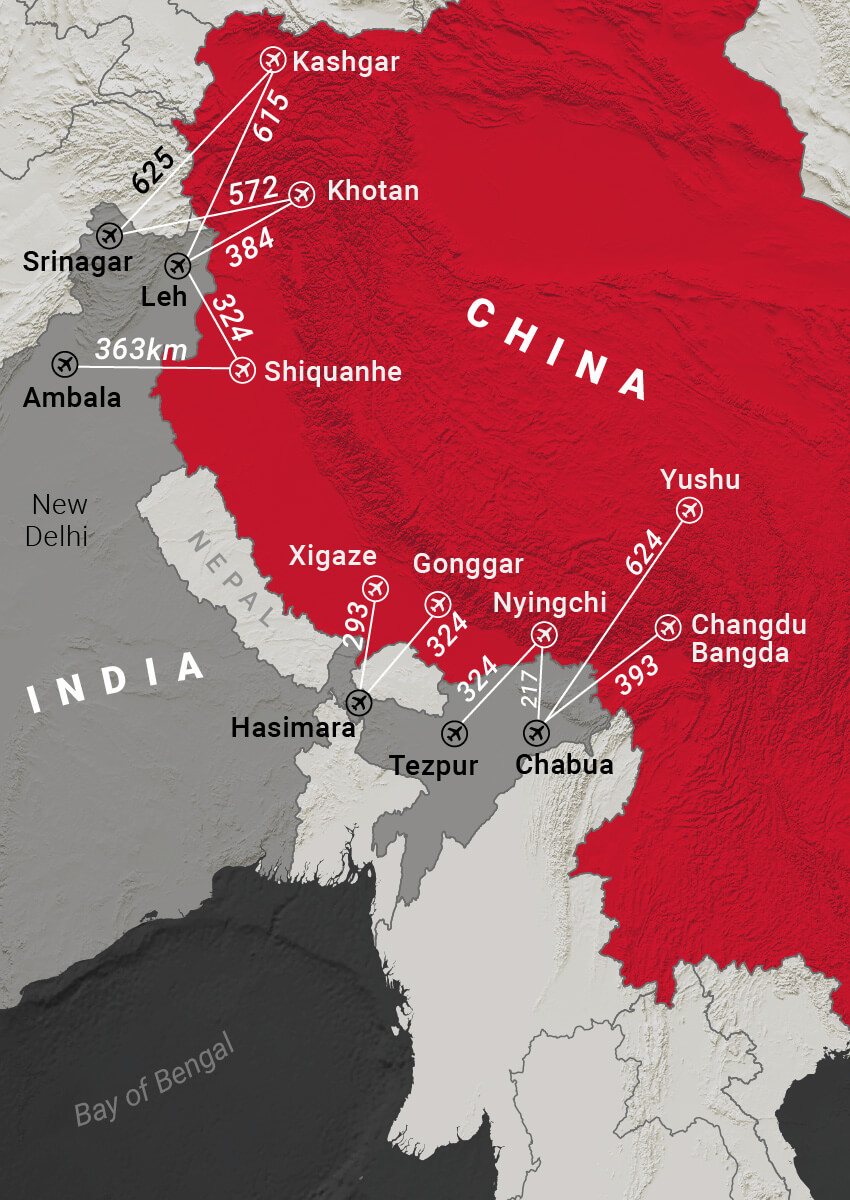
India’s advantage in the air
The high altitude of the PLA Air Force’s main strategic bases makes them vulnerable to adverse weather conditions. This restricts the capabilities of combat aircraft, reducing effective payload and combat radius by an average of 50 per cent. The low air density can prevent fighter planes such as the Su-27 or the J-11 from taking off with full weapon and fuel loads, leaving them at a disadvantage in combat.
The Indian Air Force, on the other hand, has its main bases – such as Tezpur, Kalaikunda, Chabua and Hasimara – at moderate altitudes. Its air power is therefore less constrained by conditions, enabling deep incursions into Tibet.


How a turbojet works
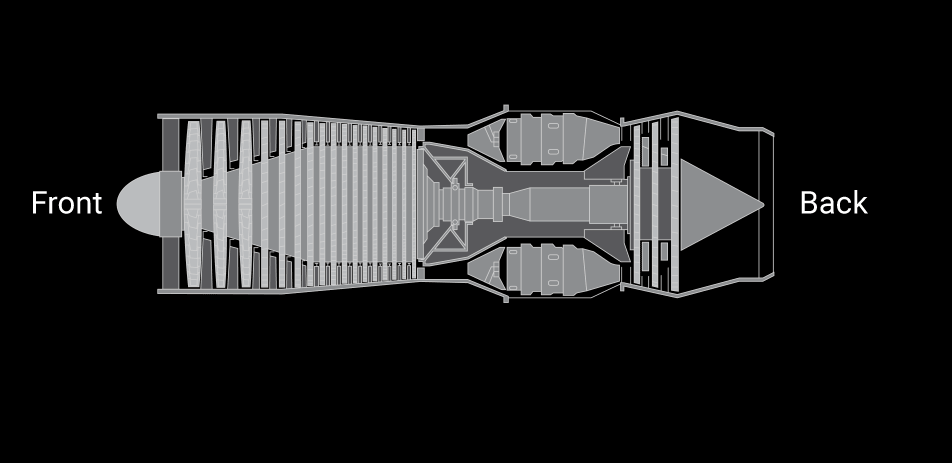
INFLATION-ADJUSTED DEFENCE BUDGETS
In 2019 the two Asian powers ranked second and third in the world for military defence spending. China led with US$261 billion to India’s US$71 billion. Both trailed the United States’ budget of US$731 billion.
Military spending per capita by country
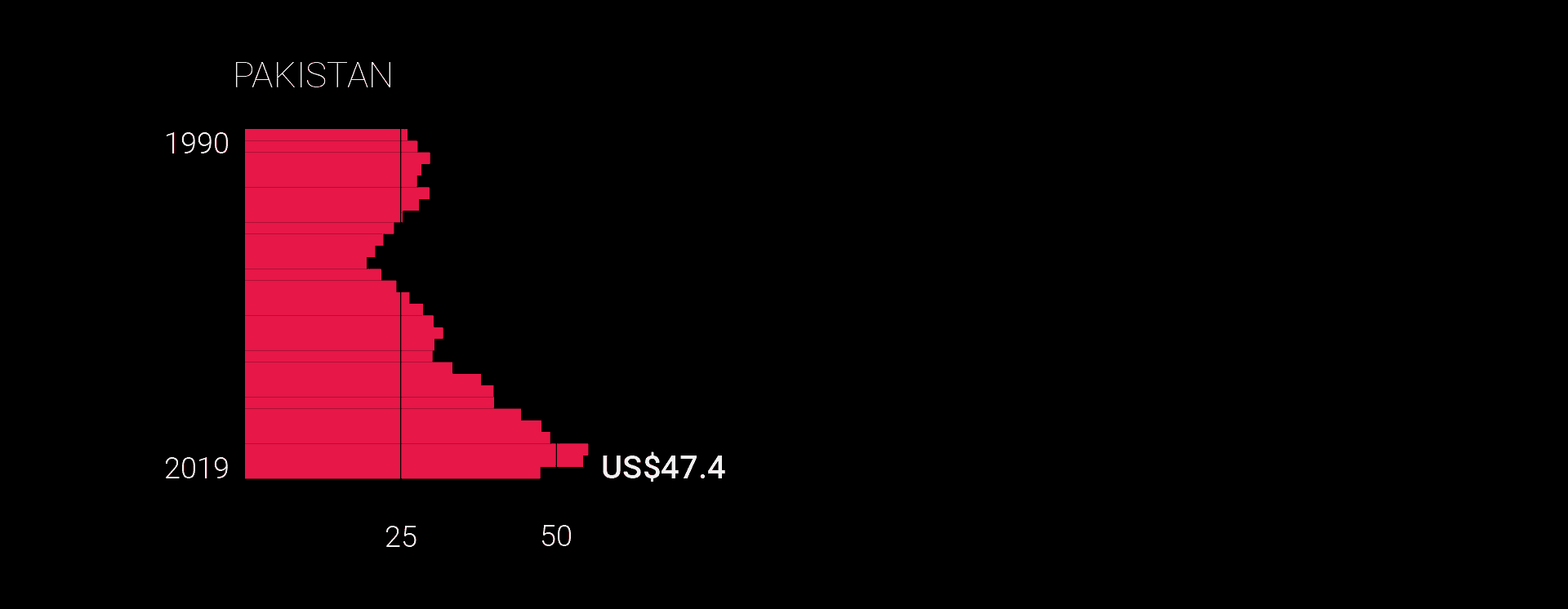
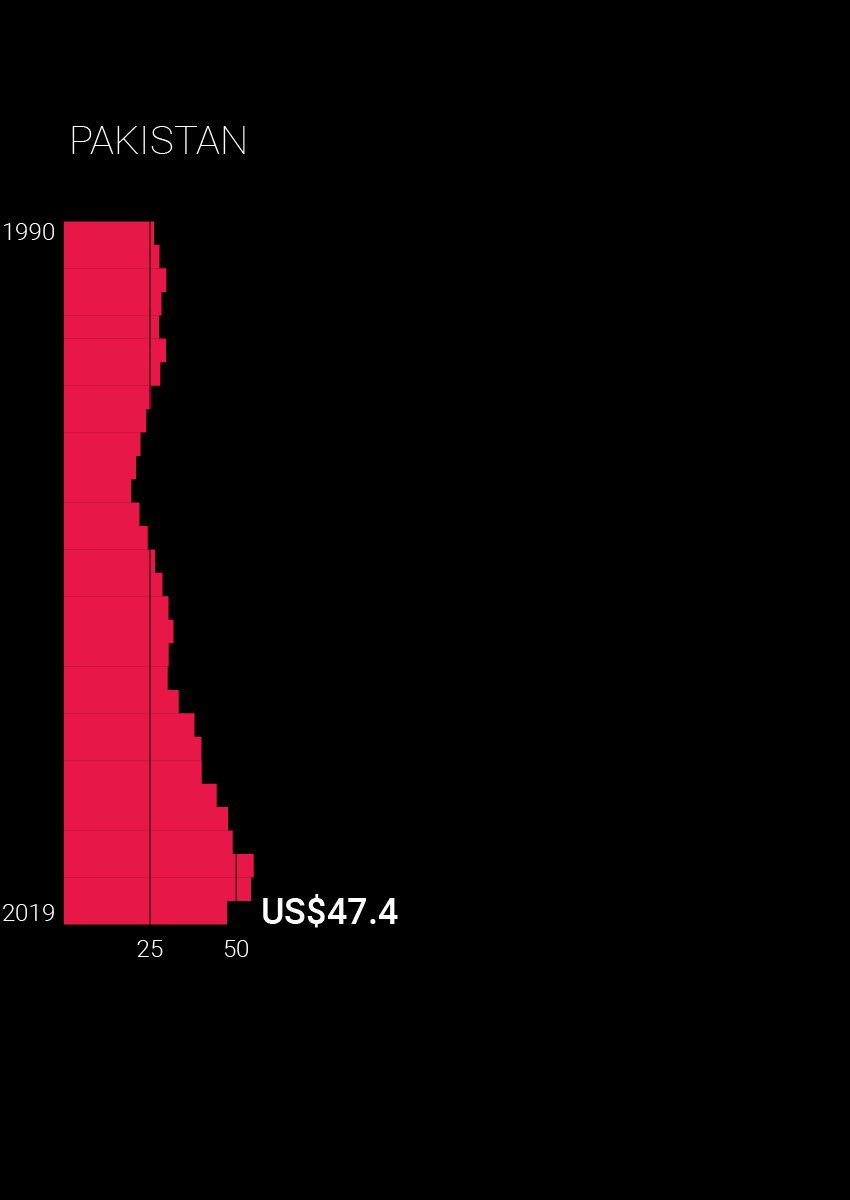
Military expenditure by country as a percentage of government spending
Creative Director Darren Long.
Aditional web development Dennis Wong.
Cover illustration Kaliz Lee.
Sources: Belfer Center for Science and International Affairs. Harvard Kennedy School, Stockholm International Peace Research Institute, Center for Strategic and International Studies, S. Rajaratnam School of International Studies, Center for a New American Security